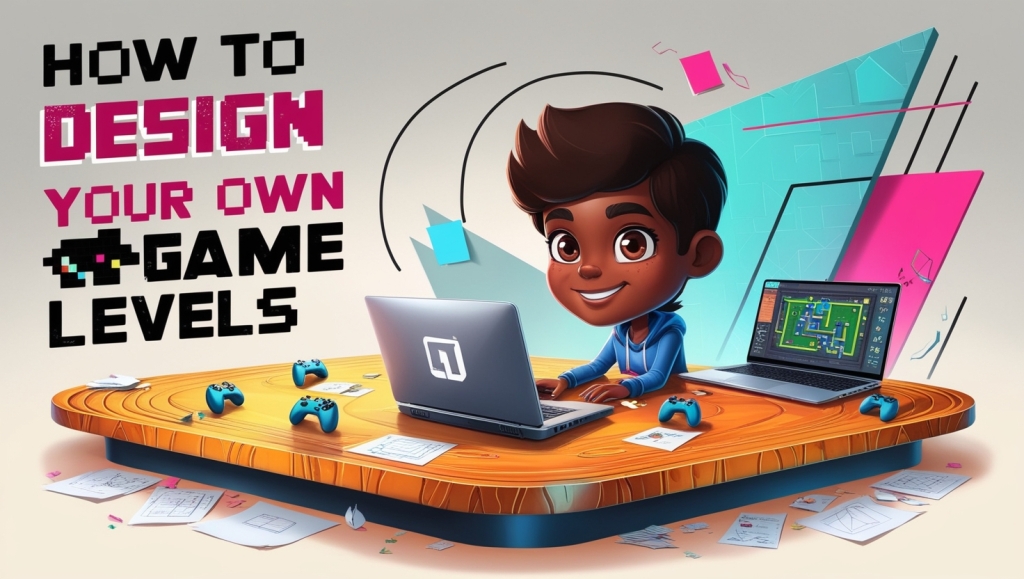Game level design is the backbone of immersive gameplay, shaping how players interact with your world. Whether crafting a linear narrative or an open-world adventure, understanding core principles like flow, pacing, and challenge balancing ensures your levels captivate players. At VipGame24, we’ve curated actionable insights to help you master level design, from initial sketches to final polish.
Understanding Game Level Design Fundamentals
Why Level Design Matters
Level design dictates player engagement by blending storytelling, mechanics, and environmental cues. A well-designed level guides players intuitively while offering challenges that match their skill progression. Poorly balanced levels risk frustration or boredom, driving players away.
Types of Game Levels
- Linear Levels: Direct players through a fixed path, ideal for story-driven games like The Last of Us.
- Non-Linear Levels: Offer branching paths, seen in titles like Dark Souls.
- Open-World Levels: Encourage exploration, as in The Legend of Zelda: Breath of the Wild.
Core Principles
- Flow: Ensure smooth transitions between challenges. Use visual cues (lighting, architecture) to guide movement.
- Pacing: Alternate high-intensity combat with calm exploration to maintain interest.
- Challenge Balancing: Gradually increase difficulty. Tools like dynamic difficulty adjustment can automate this process.
Planning Your Game Level
Brainstorming Ideas
Start by defining your game’s genre and core mechanics. For example, a horror game might prioritize claustrophobic spaces, while a puzzle game needs logical environmental layouts.
Creating a Design Document
Outline key elements in a design document:
- Objectives: Primary goals (e.g., defeat a boss, solve a puzzle).
- Mechanics: Interactions (platforming, combat).
- Visual Style: Art direction and color palettes.
Sketching Layouts
Use rough sketches to map critical paths, enemy placements, and rewards. Tools like Trello or Miro help organize ideas visually.
| Design Stage | Key Focus Areas |
|---|---|
| Concept | Theme, mechanics, story beats |
| Whiteboxing | Basic geometry, player pathways |
| Detailing | Textures, lighting, props |
Tools and Techniques for Level Creation
Top Level Design Software
| Tool | Best For | Key Features |
|---|---|---|
| Unity | 2D/3D indie games | Asset Store, C# scripting |
| Unreal Engine | AAA-quality graphics | Blueprint system, Lumen lighting |
| Tiled | 2D pixel-art games | Tilemap editing, open-source |
For beginners, VipGame24 recommends starting with Unity due to its user-friendly interface and extensive tutorials.
Effective Techniques
- Whiteboxing: Build a basic playable prototype to test core mechanics.
- Iterative Design: Refine through cycles of testing and feedback.
Playtesting and Refinement
Conducting Playtests
Recruit testers from diverse skill levels. Track metrics like completion time, death rates, and item usage. Tools like Hotjar generate heatmaps to visualize player behavior.
Analyzing Feedback
Prioritize issues that break immersion:
- Softlocks: Areas where players get stuck.
- Difficulty Spikes: Sudden jumps in challenge.
Iterating on Design
Adjust layouts, enemy placements, and puzzle complexity based on feedback. For example, if players consistently miss a hidden path, add visual markers like glowing items.
Final Polishing Steps
- Optimization: Reduce lag by simplifying geometry or using LODs.
- Audio Integration: Use ambient sounds to enhance atmosphere.
- Bug Fixing: Eliminate clipping issues or collision errors.
Explore more gaming guides on VipGame24:
- How to Build Your Own Gaming PC
- Top 5 Gaming Accessories Every Gamer Needs
- Mastering Speedrunning Techniques
By integrating these strategies, you’ll craft levels that resonate with players and stand out in the competitive gaming landscape. Happy designing! 🎮

